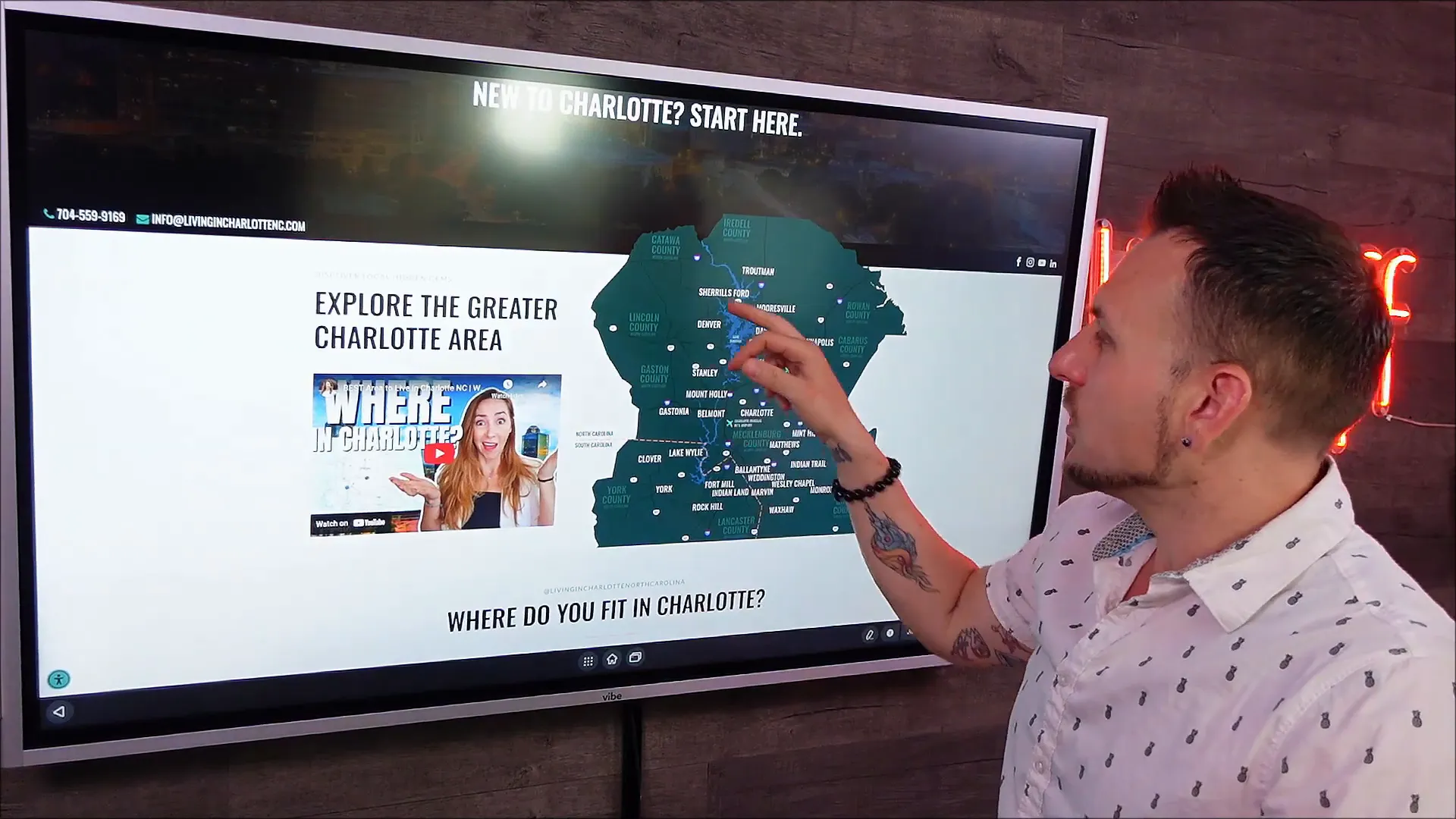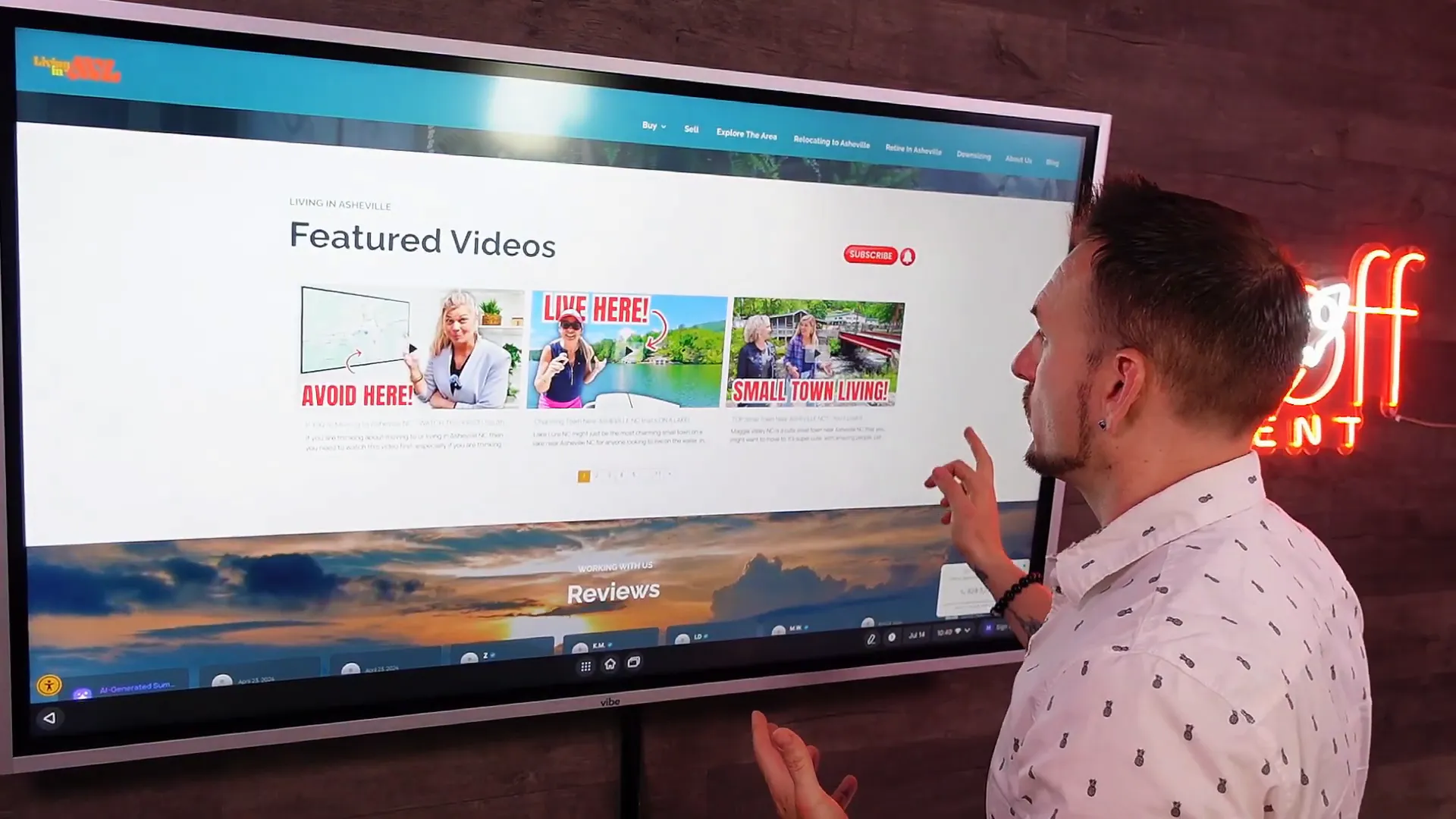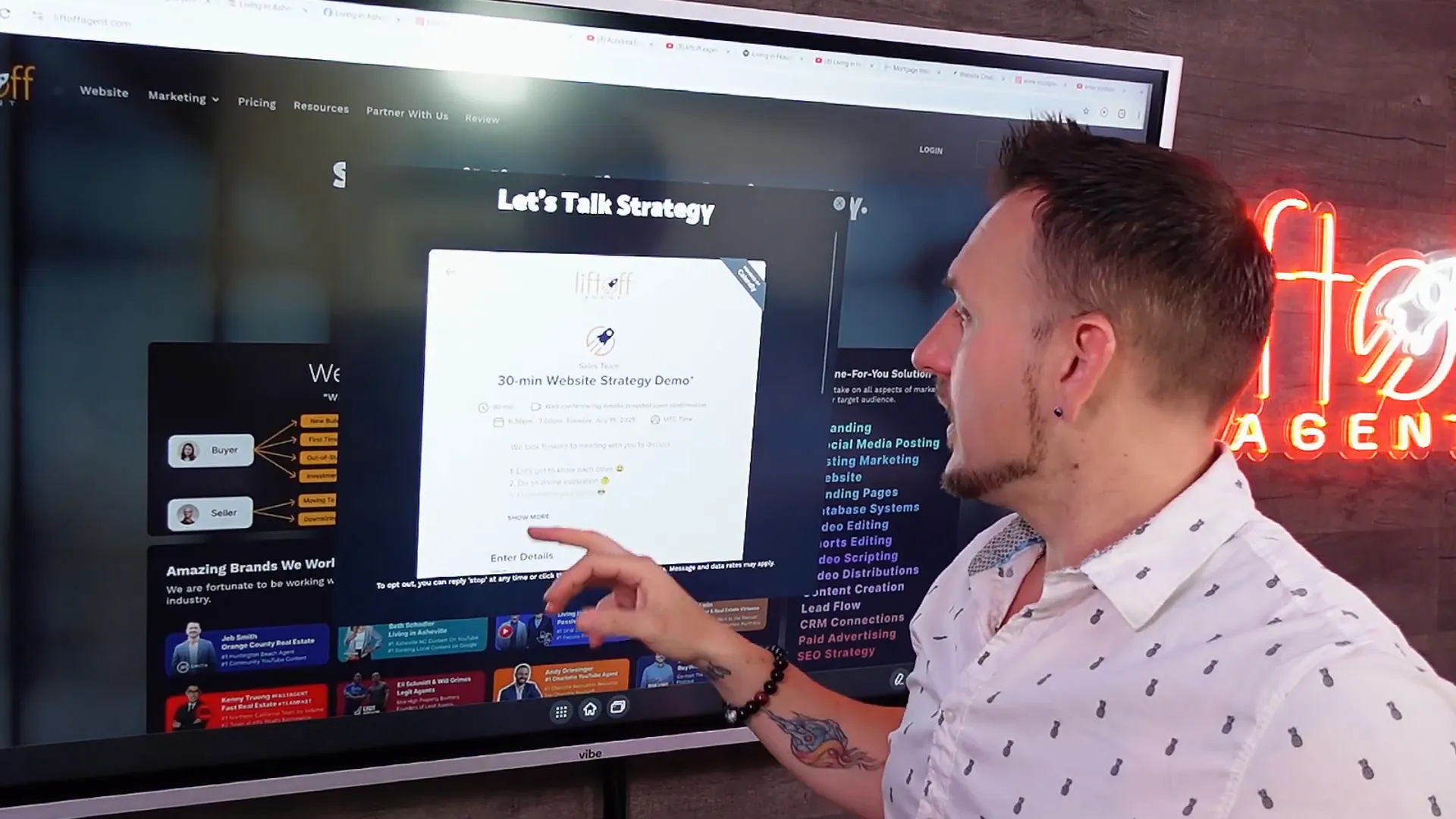Is Your Website Working for You or Just Sitting Pretty? The 24/7 Salesperson Every Realtor Needs
In today’s competitive real estate market, having a beautiful website is not enough. If your site is just sitting pretty — looking good but not generating leads or nurturing potential clients — you’re missing out on countless opportunities to grow your business. Your website should act as a 24/7 salesperson, tirelessly working to capture leads, educate visitors, and guide them toward taking action, even when you’re off the clock.
This comprehensive guide will show you how to assess if your website is truly working for you or merely serving as an online brochure. More importantly, you’ll learn practical strategies to transform your website into a high-converting tool that enhances your real estate business around the clock.
Table of Contents
- Top 3 Website Features Every Agent Needs
- Signs Your Real Estate Website Isn’t Working
- Real-World Website Examples to Inspire You
- Must-Have Website Features for Real Estate Success
- The Psychology Behind a High-Converting Website
- How to Audit Your Website Right Now
- Automation in Action: Scheduling and Follow-Up
- Why Video is the Missing Link
- Real Results: A Case Study from Houston, Texas
- Take Action: How to Get Your Website Working for You
- FAQs About How to Turn Your Real Estate Website Into a 24/7 Lead-Generating Machine
- Conclusion
Top 3 Website Features Every Agent Needs
When thinking about your real estate website, it’s essential to move beyond aesthetics and focus on functionality that drives results. Here are the three core features every realtor’s website must have to become a true 24/7 salesperson:
- Lead Capture: How many leads is your website generating? Without effective lead capture mechanisms, your site is just a digital brochure.
- Visitor Education: What happens when someone visits your site? Are you providing valuable information that educates potential buyers or sellers about the market, neighborhoods, or the buying/selling process?
- Clear Call to Action (CTA): Does your website guide visitors on what to do next? A strong CTA encourages visitors to take meaningful steps, like scheduling a consultation or downloading a guide.
Imagine your website as your tireless assistant, constantly working to generate leads, build trust, and convert visitors into clients. This mindset shift is crucial to unlocking the true potential of your online presence.
Signs Your Real Estate Website Isn’t Working
How can you tell if your website is just sitting pretty and not doing its job? Here are some red flags to watch for:
- Weak or Missing CTAs: Your website should have clear calls to action on every page, encouraging visitors to engage with your services. Are you asking visitors to fill out forms, download resources, or schedule appointments?
- Poor Mobile Experience or Slow Load Times: Most users browse on mobile devices. If your site is slow or difficult to navigate on phones or tablets, visitors will leave without converting.
- Unclear Value Proposition: Visitors should immediately understand why they should work with you. Is your unique value clearly communicated? Can visitors easily find information tailored to buyers, sellers, or those relocating?

If you recognize any of these issues with your site, don’t worry — you’re not alone. Many real estate websites fall into this trap. The good news is, these problems are fixable with the right strategy and tools.
Real-World Website Examples to Inspire You
Let’s look at two real examples of websites designed to work as 24/7 salespeople, providing inspiration for what your site could become.
Living in Asheville
This client website beautifully combines storytelling with strong lead capture elements. Visitors can learn about Beth and her partner through featured videos, which help build trust and showcase their professionalism.
The site includes automatic testimonials, which add social proof, and multiple strong CTAs like “Looking to Buy,” “Looking to Sell,” and “Explore the Area.” Additionally, community guides are available for download, serving as valuable lead magnets.
The navigation is intuitive, with focused sections such as relocating, retiring, and downsizing in Asheville — addressing specific visitor needs.

Kaila Lindsey’s Charlotte, North Carolina Website
Kaila Lindsey, a top 1% realtor, uses her website to focus heavily on relocation services. Her site features an interactive map that visitors can click to explore neighborhoods, market reports, featured properties, and local amenities like top restaurants and schools.
Her content strategy includes blogs and videos on buying, selling, and relocating, providing visitors with a wealth of information and reasons to trust her expertise.
Both these websites offer visitors a rich, engaging experience that educates, builds trust, and encourages action — exactly what your website should be doing.
Must-Have Website Features for Real Estate Success
Now that you understand what a working website looks like, here are the key features you need to include to maximize your site’s effectiveness:
1. Lead Magnets
Lead magnets are incentives that encourage visitors to share their contact information. Common examples include downloadable guides, market reports, or strategy questionnaires. These can be integrated with your CRM to automate follow-up and nurture leads through different stages of the sales funnel.
2. Clear Call to Action on Every Page
Every page should have a direct and obvious CTA — whether that’s filling out a form, scheduling a consultation, or downloading a resource. This ensures you capture maximum engagement from every visitor, no matter where they land on your site.
3. Search Engine Optimization (SEO)
SEO is essential for attracting organic traffic to your website. Focus your keywords on your specific niche — whether that’s buyers, sellers, or relocation in your target area. The goal is to become the go-to expert in your market online.
One effective strategy is turning your video content into blogs. This dual approach helps visitors who prefer reading over watching videos and improves your SEO by adding keyword-rich content.
4. Video Walkthroughs and Automation
Videos are powerful tools for real estate websites. They allow you to personally introduce yourself, explain complex processes, and provide virtual tours — all of which build trust and engagement.
Automation tied to video content can save you time and provide consistent messaging. For example, after a visitor schedules a meeting, they can automatically receive a video explaining what to expect next, along with a questionnaire to prepare for the session.
The Psychology Behind a High-Converting Website
You have just 7 seconds to capture a visitor’s attention before they decide whether to stay or leave your website. This brief window means your value proposition and CTAs must be crystal clear and compelling immediately.
Here’s what to focus on:
- Top of the Fold Messaging: The first thing visitors see should clearly state your expertise and the benefits of working with you. For example, phrases like “Find Your Happy Place in Asheville” or “Top 1% Realtor in Charlotte” instantly communicate value.
- Interactive Elements: Features like clickable maps allow visitors to engage with your site and explore neighborhoods or resources that interest them.
- Behavior Tracking: Use tools like Hotjar to monitor where visitors click and how they navigate. For those who don’t engage with CTAs, tools like Warmly can capture contact details based on IP tracking, enabling you to follow up even if they don’t fill out forms.
How to Audit Your Website Right Now
To start transforming your website into a 24/7 salesperson, perform this quick audit:
- Check What’s Above the Fold: Visit your website and see what visitors see first. Is your value proposition clear? Are your CTAs prominent?
- Review Your CTAs: Are you asking visitors to do something on every page? If not, add clear calls to action.
- Analyze Website Traffic: Look at your website analytics to see who’s visiting, how long they stay, and what pages they visit. If you don’t have access, ask your broker or website provider for login details.
- Test Mobile Experience: Open your site on different devices and ensure it loads quickly and navigates smoothly.
If you find your site lacking in any of these areas, it’s time to implement strategies to fix them and maximize your site’s potential.
Automation in Action: Scheduling and Follow-Up
Automation is a game-changer when it comes to managing leads and saving time. Here’s an example of how automation can work on your website:
- Visitors schedule an appointment by selecting a date and time.
- They fill out their contact information and submit the form.
- You receive a notification email, and the visitor receives a confirmation email.
- Automatically, a video plays explaining what to expect during the meeting, setting clear expectations.
- The visitor is prompted to complete a strategy questionnaire to help you prepare.
This process not only saves you time by reducing repetitive communication but also keeps leads engaged and informed.

Why Video is the Missing Link
Video content is often overlooked but is incredibly effective for real estate websites. It adds a personal touch, builds trust, and simplifies explanations of complex topics.
One common challenge with buyers and sellers is their desire for instant gratification—they want quick answers and often don’t slow down to absorb details. Videos on your website allow you to control the pace of information delivery and ensure visitors understand the process before moving forward.
Additionally, video analytics let you see exactly how many people watch each video, giving you insights into what content resonates most with your audience.
Real Results: A Case Study from Houston, Texas
To demonstrate the power of a well-optimized, video-enhanced, lead-focused website, let’s look at the results from the “Living in Houston, Texas” site after 30 days of implementation:
- 1,800 visitors to the website
- 67 engagements(interactions with CTAs, videos, or forms)
- 26 phone calls generated directly from the site
- 37 form submissions capturing lead information
- 4 click-to-email interactions
These numbers highlight how a website that works as a 24/7 salesperson can drive real business growth, save you time, and allow you to focus on what you do best — helping clients buy and sell homes.
Take Action: How to Get Your Website Working for You
Now that you understand the importance of a high-performing website, here are some actionable steps to get started:
- Evaluate Your Current Website: Use the audit checklist above to identify gaps.
- Create or Update Lead Magnets: Develop guides, checklists, or videos that visitors want to download or watch.
- Incorporate Video Walkthroughs: Film personalized video tours of your website, listings, or market updates to engage visitors.
- Implement Automation: Use scheduling tools and automated email/video sequences to nurture leads without extra effort.
- Optimize for SEO: Focus on keywords relevant to your market and niche to attract organic traffic.
- Monitor Analytics: Regularly review your website stats and adjust your strategy based on visitor behavior.
Remember, your website should be working for you 24/7 — not just sitting pretty.
FAQs About How to Turn Your Real Estate Website Into a 24/7 Lead-Generating Machine
Why is my website not generating leads even though it looks great?
A beautiful website doesn’t guarantee leads. Without strong calls to action, lead magnets, and visitor education, visitors may browse but not engage. Your website needs to actively guide visitors toward taking action.
How can I use video to improve my real estate website?
Video builds trust and personal connection quickly. Use videos to introduce yourself, explain processes, showcase listings, and provide virtual tours. Combine videos with blogs to improve SEO and cater to different visitor preferences.
What are lead magnets, and why are they important?
Lead magnets are valuable resources (like downloadable guides or checklists) offered in exchange for visitor contact information. They help you capture leads and nurture them through your sales funnel.
How do I know if my website is mobile-friendly?
Test your website on various devices like iPhones, Android phones, and tablets. It should load quickly, display correctly, and allow easy navigation. Tools like Google’s Mobile-Friendly Test can help assess your site.
What tools can help me track visitor behavior on my website?
Tools like Hotjar provide heatmaps and click tracking, showing where visitors interact most. Warmly can capture visitor contact info based on IP tracking when they don’t engage with CTAs.
How quickly should I respond to leads generated from my website?
Responding promptly is critical. Automation can help by sending immediate confirmation emails or videos to leads, keeping them engaged while you prepare a personalized follow-up.
Conclusion
If your real estate website is just sitting pretty, it’s time to transform it into your most valuable 24/7 salesperson. By focusing on lead capture, educating your visitors, and guiding them with clear calls to action, your site can generate meaningful business growth around the clock.
Incorporate video walkthroughs and automation to save time and provide consistent, high-quality engagement. Use SEO to attract the right audience and monitor your analytics to continuously improve your strategy.
Start today by auditing your website, adding lead magnets, and using video to build trust. Your website should never be passive — it should be working hard for you every minute of every day.
Embrace the mindset that your website is a tireless salesperson and watch your real estate business soar.
Ready to take action? Schedule your FREE consultation and strategy session now!
Also, explore our FREE resources to enhance your real estate website today!
If you have any questions or need assistance, feel free to reach out via our website www.liftoffagent.com .

We specialize in working with real estate agents and teams to build local authority. We do this through creating and managing your brand, website, video and social presence.
We'd love to chat and show you how you can dominate your local market and avoid wasted marketing dollars.
Subscribe to Newsletter